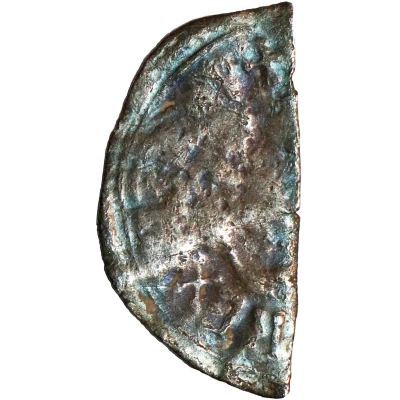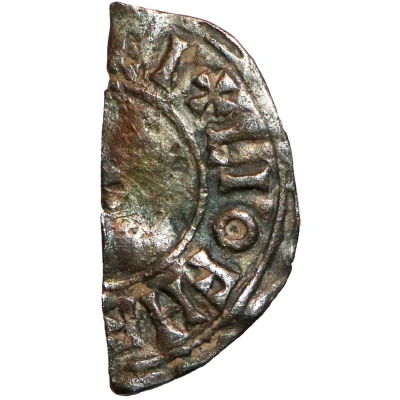


© John Conduitt (CC BY-SA)
Halfpenny - Æthelstan Crowned bust type ND
| Silver | 0.7 g | 22 mm |
| Issuer | England (United Kingdom, British Overseas Territories and Crown Dependencies) |
|---|---|
| King | Æthelstan (924-939) |
| Type | Standard circulation coin |
| Years | 924-939 |
| Value | ½ Penny |
| Currency | Penny (924-1158) |
| Composition | Silver |
| Weight | 0.7 g |
| Diameter | 22 mm |
| Shape | Half circle |
| Technique | Hammered |
| Orientation | Variable alignment ↺ |
| Demonetized | Yes |
| Updated | 2024-10-08 |
| Numista | N#308304 |
|---|---|
| Rarity index | 95% |
Reverse
Small cross pattée within inner circle, moneyer and mint name around.
Script: Latin
Lettering: + LIOFHE[LM MO LOND] CI
Translation: Liofhelm, moneyer, London
Comment
Kings of All England (924-1158), Aethelstan (924-939), Crowned bust type, cut halfpenny, London mint, struck circa 933-938.Moneyers included: Eclaf/Ellaf, Beahred, Grimwald, Igere, Liofhelm, Wulfhelm, Aelfstan, Alefwald and Biorneard.
Medieval coins were cut into halves and quarters to provide fractional denominations without the need to strike new coins. It is thought these were generally cut at the mint, although it is also likely to have happened during transactions. Cut halfpennies are known in England from Anglo-Saxon times (c. 750s) until Edward I introduced round farthings and halfpennies in 1279.
('A' suffix has been added to the Spink reference to differentiate from the full penny.)
Interesting fact
One interesting fact about the Æthelstan Halfpenny coin is that it features the first crowned bust of a king on an English coin, which was a new design introduced during Æthelstan's reign. This design change marked a significant shift in the representation of royal power and authority on English coins, and it set a precedent for future coinage designs in England and other countries.